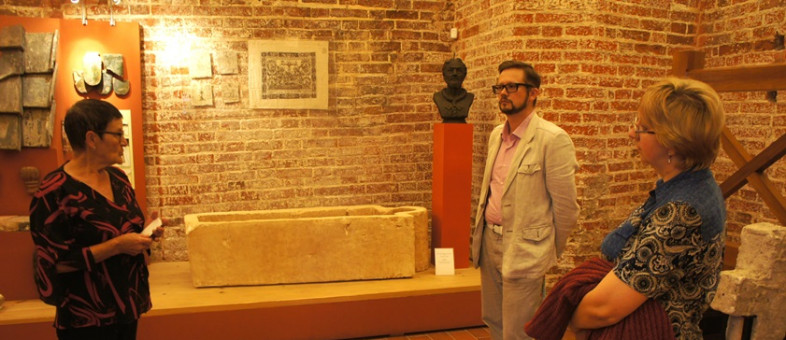
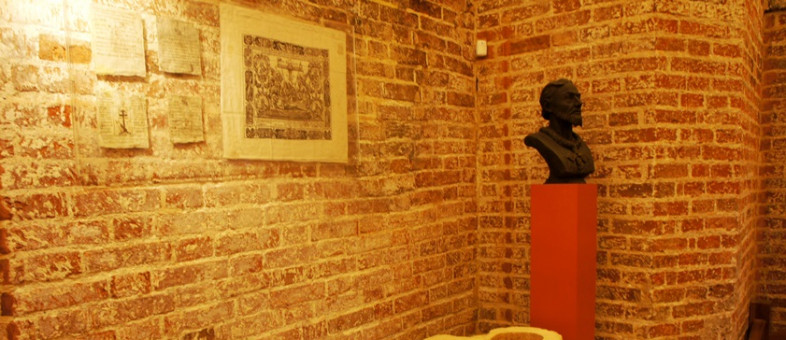
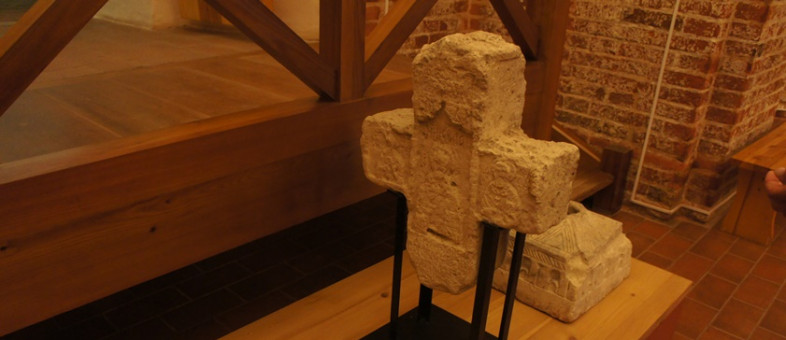
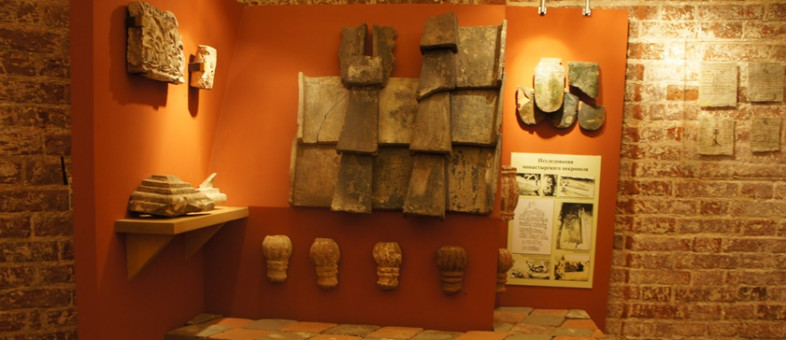
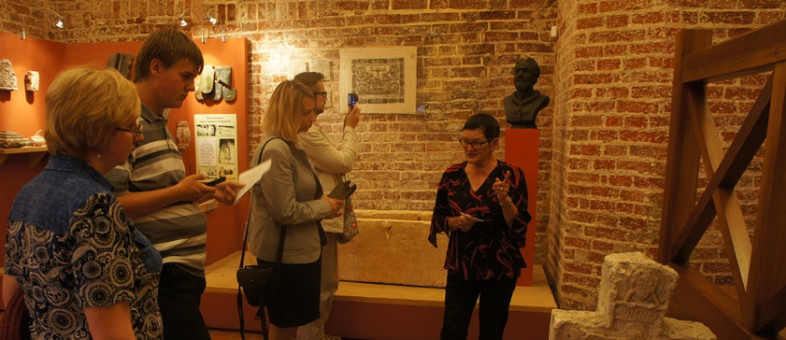
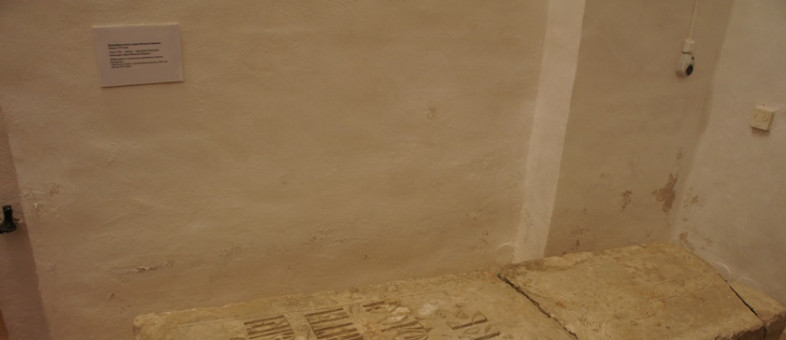
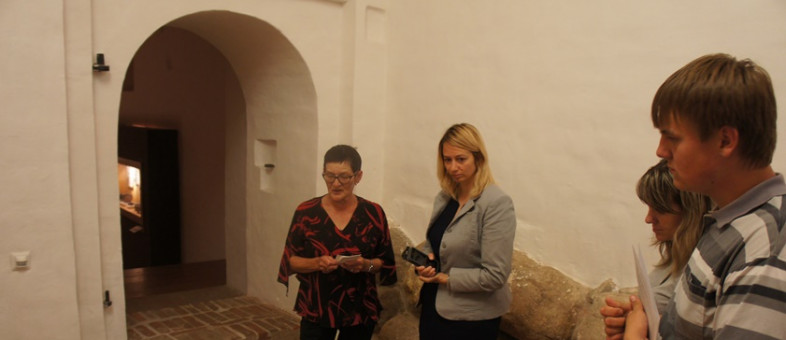
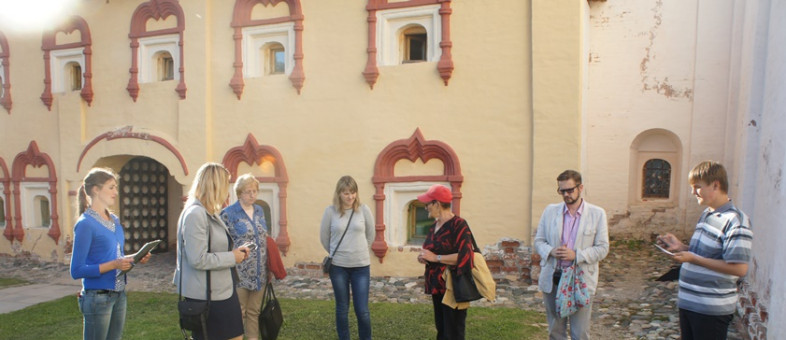
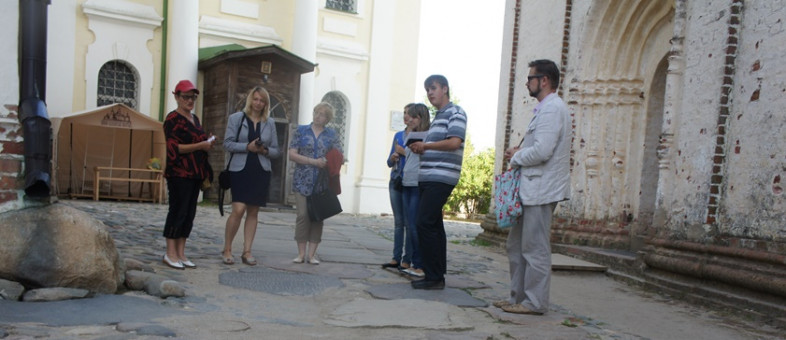
Do you know that there are about 200 gravestones in the Kirillo-Belozersky Museum-Reserve? There are graves of elders, schemamonks, and even wealthy merchants! Both adults and children were buried in the monastery; the youngest among them was only 4 years old. You can see some children’s graves with very touching epitaphs on the tombstones of the Ivanovsky (St. John’s) Monastery. One of the inscriptions says, “God sent an angel from the heaven to the earth as consolation, showed his creation and took him back to the heaven”.
Participants of the program “Meetings in the People’s House” learnt about all this at the tour “Necropolis of Kirillo-Belozersky Monastery” conducted by Vena Artyomovna Mazaletskaya in the form of a lecture.
It turned out that first the deceased were buried in the white limestone sarcophagi that were improved with time. They made a hollow for a head in them and decorated the gravestones with patterns. Such coffins were not made in Kirillov, but could be commissioned in the Moscow region. It is clear that they were brought not by train at that time and it took a lot of time to deliver them. Therefore such an article was ordered beforehand. This is the reason why we can see only the year of death without a day and a month on some tombstones.
Hewn stones on which they cut the names of the deceased were used as gravestones in the monastery later. Over 130 similar tombstones could be seen on the path leading from the Church of St. Kirill to the House of the Father Superior. Monks made such a stone path after they had found the slabs dismantling the Church of St. Kirill. A churchyard where “monastery servants” were buried was located near it. For instance, we can read the following inscription on one of the tombstones: “Tikhon Trofimov Volkov son servant of Kirillov died in 7181 (1673 according to our calendar) on June 29”.
It goes without saying that such a “paved road” raised the ire of the rulers – how the monks could behave in such a blasphemous way. As a result, the inscriptions on the stones were scraped off. But this work hasn’t been accomplished and we can see it near the Assumption Cathedral.
Visitors could listen to the talk about the necropolis of the Kirillo-Belozersky Monastery for hours. Vena Artyomovna Mazaletskaya conducted the tour lively and interesting. She touched on the family vault of the Simonovs where all tombstones were still on their places. The same can’t be said for the Vorotynskys buried in the Church of St. Vladimir. She also told the participants of the meeting about the grave of St. Kirill Belozersky – the founder and the first Father Superior of the Kirillo-Belozersky Monastery buried in 1427.
It is clear that everybody knows it – the grave is in the Church of St. Kirill. But another thing is important here: the grave of St. Kirill Belozersky has never been touched during numerous archeological excavations in the monastery. The Russian Orthodox Church banned it. His shrine before which thousands of pilgrims and believers bow down has been made on the exact model created after his death. Who knows, but the saint’s relics are probably incorruptible.
“Meetings in the People’s House” go on! We have spoken about the graves in the Kirillo-Belozersky Monastery this time.
Official name of the museum:
The Federal State Budgetary Institution of Culture “Kirillo-Belozersky Historical, Architectural and Art Museum-Reserve”
Founded:
In 1924
Museum status:
It was included into the State List of Particularly Valuable Objects of Cultural Heritage of the Peoples of the Russian Federation in 1997.